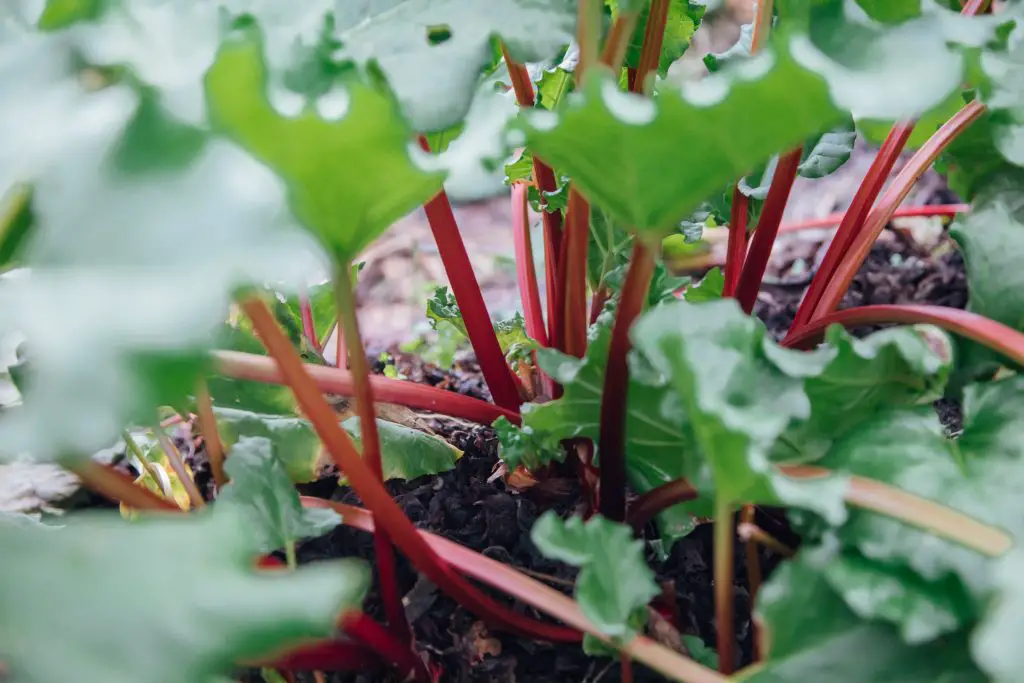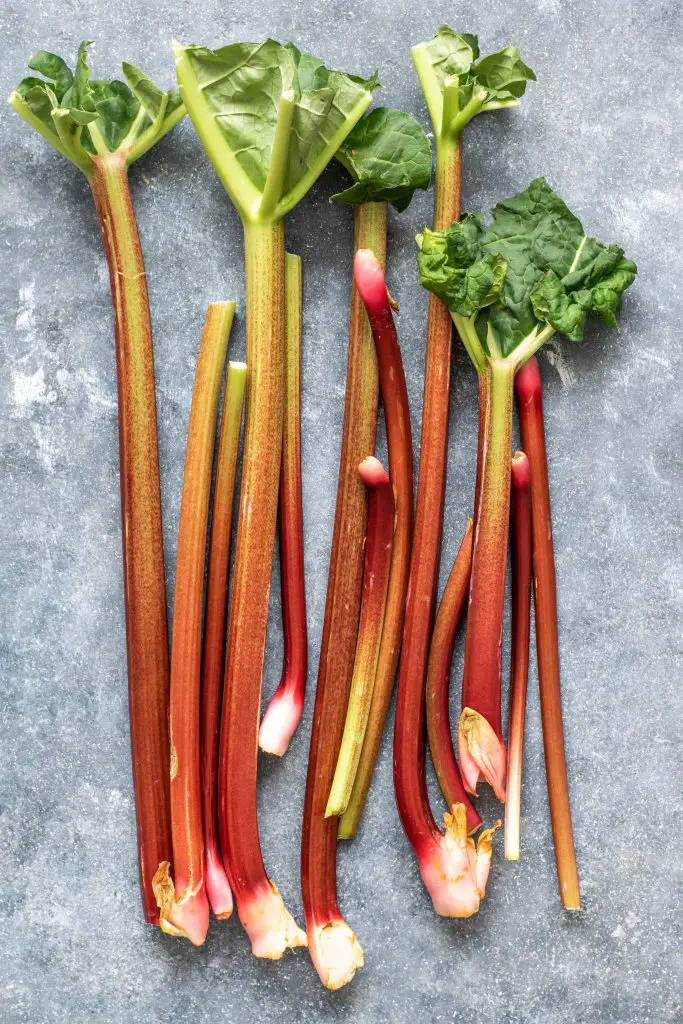Can You Grow Rhubarb From Stalks? Rhubarb is a popular garden plant that is both attractive and edible. It is a perennial plant that produces large leaves and in most cases bright red stalks, though there are some green stalk varieties. The plants are normally grown from seed or divided, but can the plants be grown from stalks?
Rhubarb is extremely difficult, if not impossible, to grow from stalks based on my experience. I have tried propagating rhubarb from stalks using several different methods which have included propagating in both soil and water. In all cases, the plant has failed to produce any roots of any type, which suggests it is extremely difficult to produce new plants via this method.
Based on what I have observed in my experiments I suspect that the stalks lose moisture quickly as I have seen the stalks splitting and the outer layers curling outward like a banana being peeled.

How To Propagate Rhubarb By Division
Rhubarb can be easily propagated by division and it is the most common way to create new plants. Most rhubarb plants generally require division every couple of years to reinvigorate the plant so if you have a friend that has a plant give them a shout-out as you shouldn’t need to wait that long.
The signs that the plant needs division is usually a loss of vigor which usually results in the plant producing a reduced number of stalks compared to previous years. It is also common to see the location where the shoots are coming increasing in size and begin to leave dead patches in the middle of the crown.
However, if you are really keen to get a second plant it is not necessary to wait until the rhubarb is declining in productivity. It can be divided at any stage provided that the crown has become sufficiently large.
When it comes time to divide the plant it is best to remove the entire plant from the ground so that the crown can clearly be seen. When deciding where to cut the crown it is important to ensure that there are at least 3 or 4 viable shoots coming from the section you intend to cut away. Additionally, the crown should be at least the size of a clenched fist however a section larger than that this is generally preferred.
To cut to crown most people use a sharp spade, however, some gardeners have been known to use a kitchen bread knife. Once the crown has been divided into sections the sections should be replanted into the garden at a depth that allows the top of the crown to sit at approximately the same level as the surface of the soil.
In terms of location and soil conditions rhubarb generally prefers a sunny location that has rich moist and well-drained soil however, rhubarb will tolerate partial shade.

How To Propagate Rhubarb From Seed
It is also possible to grow rhubarb from seed. Seed can be purchased or it can be collected from an existing plant you have in the garden. To collect seed from an existing rhubarb plant you will need to wait until the plant produces a flower stalk. The chances of this occurring tend to increase as the plant ages, with flower stalks most commonly produced in either late Spring or early Autumn.
Once the flower stalk appears the flower head will initially have a bit of a green ting that progressive changes to yellow, and then brown. This process will typically take around 3 months to occur, however, once the seed becomes brown they are usually ready to remove from the stalk. The video below gives you a good idea of what the stalks look like and how to harvest the seeds.
Once the seeds have been collected or purchased they can be either planted out into seed trays or they can be placed on to damp paper towel to start the germination. When the seeds are placed on the towel they will typically take 7 to 10 days to germinate.
Irrespective of whether you sow directly into soil, or germinate seeds on a towel the seeds will need to end up in a pot at some stage. When starting the seeds off it is best to use seed raising mix rather than garden soil as it is sterile, has a fine texture, and has good moisture retention. Generally, I recommend using a 4 to 6-inch pot as it will avoid the need to transplant the rhubarb into a larger pot later on.
When planting the seed they should be sown at a depth or ¼ inch (1 cm) deep with 2 or 3 seeds per pot. Once planted the seeds need to remain moist but not sodden. I find that the easiest way to do this is to place the pots in a tray filled with about an inch of water, which is usually sufficient to keep the soil moist.
Seedlings will typically take 2-3 weeks to appear in the soil. The plant will take 4 to 5 months to reach a reasonable size before the plant is ready to go out into the garden. This is typically is when the plant has reached a height of 3 to 4 inches (8 to 10 cm) tall. Below is an example of a 5-month rhubarb plant that is ready to be planted out in the garden.

When planting the rhubarb plant out in the garden it is best to harden off the plants for 1 to 2 weeks and avoid planting them outside in the garden if there is going to be frost occurring in the next few weeks.
When selecting a location it is important to ensure that the soil is rich, moist but free-draining soil to ensure that the plant isn’t sitting in soggy conditions for an extended period of time. The plants should be spaced 3 to 4 ft apart in a sunny location, however, rhubarb can tolerate partial shade.
